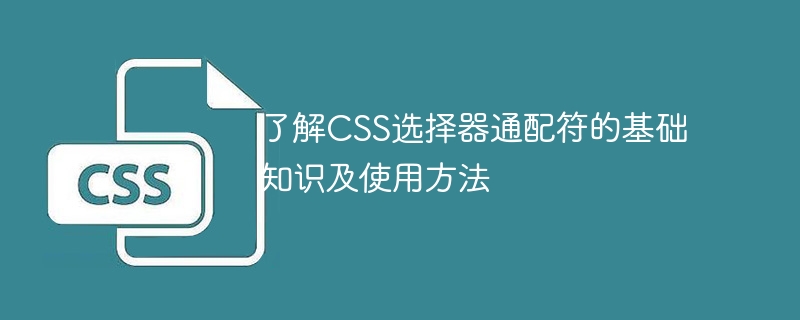

Understand the basic knowledge and usage of CSS selector wildcards
In CSS, selectors are used to select elements in HTML documents and apply styles to them tool. Among them, CSS selector wildcard is a powerful selector that can be used to match elements that meet specific conditions. This article will introduce the basics of wildcards and how to use them, and provide specific code examples.
Wildcards are special characters in CSS that are used to represent arbitrary elements. In CSS, there are two wildcard characters that can be used: * and ~.
Sample code:
* {
color: red;
}The above code will set the font color of all elements in the document to red.
Sample code:
* ~ p {
font-size: 20px;
}The above code will set the font size of all paragraph elements after all elements in the document to 20 pixels.
It should be noted that although the use of wildcards is very powerful, it also has a certain performance overhead. Therefore, in actual use, try to avoid excessive use of wildcards.
In addition to wildcards, we can also combine other selectors to select elements more precisely. Here are some common examples:
Select all paragraph elements:
p {
color: blue;
}Select all elements with class "box":
.box {
background-color: yellow;
}Select all elements with the "data-" attribute:
[data-] {
border: 1px solid black;
}To summarize, understand the basics of CSS selector wildcards and The usage method is very important to master the application of CSS styles. By mastering the use of wildcards, we can select and apply styles to target elements more accurately. At the same time, you need to pay attention to the moderate use of wildcards to avoid unnecessary impact on performance. Hopefully the sample code provided in this article will help you better understand the use of wildcards.
The above is the detailed content of Learn the basics and usage of CSS selector wildcards. For more information, please follow other related articles on the PHP Chinese website!




